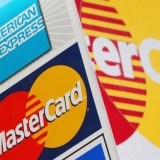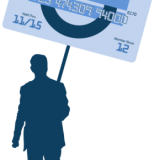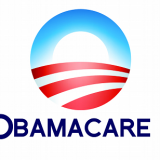This Page is No Longer Being Updated. Please Click Here to search for our current listings of the best prepaid debit cards.
Tag: FDIC
-
Which Plastic Is the Best? Debit Cards, Credit Cards or Prepaid Cards?
Long gone are the days when credit cards were the only choice for people in need of plastic. Here are some other options:
Imagine walking into a restaurant and being told that a menu is not needed because there’s only one dish being served. From time to time that happens — set price, or prix fixe, menus pop up at fancy restaurants and around holidays — but for the most part it would prompt many of us to head for the door. We all like choices.
Major financial institutions, like most restaurants, understand the need to offer different card offerings to meet the varied circumstances and tastes of their customers. As a result, many now offer three card options beyond traditional credit cards. Consumers can choose between secured credit cards, conventional debit cards and prepaid debit cards. Banks are tailoring their cards to meet the needs of different market segments, offering secured cards to young people and others eager to build good credit, issuing conventional debit cards to most checking account customers, and providing prepaid services to those who do not have bank accounts or who have other reasons for wanting prepaid cards. The choices assure almost all consumers can enjoy the safety and convenience of shopping or paying bills with bank or brand imprinted cards. Here’s a bit more about each option.
Secured Credit Cards
An inevitable part of life is to face financial stresses and setbacks. It just happens. And that has especially been the case over the past few years, as the economy has limped along and many have had to contend with lost jobs, lower wages and, often, a resulting damaged credit history. Secured credit cards are intended for people who have had some financial difficulties and thus have trouble qualifying for the sort of unsecured lines of credit typical with a standard credit card. In contrast with standard credit cards, credit building cards or secured credit cards require you to pay a deposit in exchange for borrowing privileges. Think of it this way: rather than the $5,000 or $10,000 limit many credit card companies grant their customers, secured credit cards generally set your limit at whatever amount you can deposit into your account upfront. So, if you open a secured credit card account with $1,500, then you have a credit line of $1,500.
Not all cards have such a strict formula for establishing credit lines, especially after you’ve proven that you reliably pay your bills. Qualifying standards are relatively lenient because that upfront deposit acts as collateral. In exchange, however, you face strict payment requirements and risk substantial penalties and interest hikes if you fail to use your card responsibly. The best secured cards require less than $40 in annual fees and charge less than 18 percent interest. The cards also typically assess late charges. The good news, however, is that prudent use of a secured credit card can help rebuild our your credit rating and help you qualify for an unsecured card (a “normal” credit card).
Conventional Debit Cards
“Free” checking is very seldom completely fee-free. When you open a conventional checking account, the majority of banks issue a debit card as part of their service. You may use a debit card to withdraw funds directly from your checking account on those occasions when you cannot write checks. You can also take advantage of online shopping and bill-paying services, which make spending and tracking your money far easier than writing out checks and combing through your register to balance your account. While conventional debit cards combine the convenience of a credit card with the security of a check, they can often come with fees. More and more banks are charging their customers monthly fees, such as overdraft charges, when they opt to use a debit card.
Prepaid Debit Cards
Prepaid debit cards offer the same convenience as credit and conventional debit cards without the risk of overspending. That’s because prepaid debit cards require consumers to deposit, or load, money into their account upfront. And the amount of money loaded onto the card is all that you can spend. Most prepaid debit cards require no application, and many charge limited or no monthly fees when you meet minimum monthly loading requirements. An increasing number of major financial institutions offer prepaid debit cards that carry all the same consumer protections as their conventional cards, and some are now including Federal Deposit Insurance Corporation (FDIC) protection as well. Consumers, however, must compare prepaid debit cards, because many providers still charge “maintenance” and “inactivity” fees. Mitchell Weiss, co-founder of the University of Hartford’s Center for Personal Financial Responsibility, tells U.S. News & World Report, “These cards prey on the under and unbanked consumers, who mistakenly believe they’re more economical than having a traditional checking account.” Fortunately, we make is simple to compare cards using our in-depth prepaid card analysis.
How to Choose a Card
Because they submit regular monthly reports to the three major credit bureaus, secured credit cards help you establish, restore or improve your credit. Tied to your checking account, conventional debit cards make routine transactions more convenient. Retailers and service providers typically accept debit cards even when they do not accept personal checks, and conventional debit cards make online shopping easy. With most conventional debit cards, however, you run the risk of overdraft penalties. For many families, prepaid debit cards can be a good choice, because they offer the convenience of credit and conventional debit cards while they make sure you stay on your budget. If you want to shift your family to a “cash only” economy, prepaid debit cards can be a good step in that direction.
No single card is the best choice for everyone. Your best choice depends on your financial situation and objectives. Many credible online sources provide tools for comparing cards and calculating which best satisfies your needs. And picking a card doesn’t have to be an either-or proposition; many families choose to carry and use one of each.
Originally posted on Huffington Post
-
A True Wall Street Occupation?
How the Occupy Card Doesn’t Live up to its Promise
by Shane Tripcony
The terms and conditions of credit, debit and prepaid cards are not what anyone would call scintillating reading. Layered with legalese and hard to decipher jargon, these documents have traditionally (and understandably) been ignored by consumers. Which is too bad because they contain the sort of vital information people need to make smart financial decisions.
By contrast, the recently announced fee structure for the Occupy Card is a legitimately fascinating read. The Occupy Card is a prepaid debit card that an offshoot of the Occupy Wall Street Movement is hoping to soon introduce to the marketplace, the first of what the so-called Occupy Money Cooperative would like to be an array of financial products and services. And while the proposed fees are not the fully-fledged terms one would wade through with an already available prepaid card, there’s one section you probably won’t find with many other cards: how to avoid the fees. (To be fair, Account Now generously offers tips to save money on their fees page as well, so kudos to Account Now, as well.)
For instance, the issuers of the Occupy Card dutifully note that it will cost users $1.95 to take money out of an ATM, the result of network and other third party charges (ie. not Occupy’s fault). But to dodge that fee, the Occupy Money Cooperative urges people to get cash back while shopping. It goes on and on like this, with the designers of the Occupy Card offering tips on how to get around fees whenever possible.
Arguably, in a financial services industry that many believe seeks out revenue generating fees the way a shark hones in on blood, the mere existence of a card-provider tip sheet about avoiding them is incredible. Of course, it’s not a huge surprise, given the Occupy Movement’s loathing of the way it believes Wall Street mistreats its customers and harms society.
Now, don’t expect other issuers of prepaid debit cards to suddenly follow Occupy’s lead and highlight ways to sidestep their fees. (It sure would be nice, though!) But the sad truth is that they won’t need to because the non-profit, stick-it-to-the-man Occupy Card is far less consumer-friendly than many of the prepaid cards offered by the big banks. That’s right, the greedy capitalists from Wall Street have many, many prepaid debit cards that would cost consumers far less than the offering from the former residents of Zuccotti Park.
While the Occupy Card has a low monthly account fee of $0.99, the $1.95 charge to take money out of an ATM is painful for anyone – no matter whether it’s the fault of Occupy or not. Also costly are fees for getting basic account information. The Occupy Card charges $2 to speak with a customer service representative and $0.99 to get automated help. As with most consumer-friendly prepaid debit cards, there’s no charge to load the Occupy Card using direct deposit. But any other method to load the card will set people back as much as $5 per transaction. That’s not exactly the kind of help the 99% need.
It’s also not going to help the Occupy Card gain much traction in the marketplace. Based on our calculations, the average annual fees for the Occupy Card would cost the average consumer $259.40 per year. Truth be told, that lands the Occupy Card squarely in the middle of the pack. There are alternatives, such as Bluebird by American Express, which cost the consumer nothing, based on our standard formula. There are quite a few other cards that average out with lower fees as well. Cards from banking behemoths like Chase and U.S. Bank and American Express offer free ATM withdrawals and cash loads and are, overall, a far better deal for consumers. Even with the fee differences, the Occupy Card does send a message, and many consumers may find the importance of sending that message to be worth those higher fees. Bottom line, here’s the question for everybody: Are you up for occupying the Occupy Card?
-
FDIC Insurance And Prepaid Debit Cards
When you have a debit card tied to a traditional bank account and the bank goes out of business, the federal government guarantees you up to $250,000 of the money that you have in your account through mandatory FDIC insurance.
“FDIC insurance is an important financial protection,” says Lauren Saunders, managing attorney of the National Consumer Law Center in Washington, D.C. “It ensures the safety of your money up to $250,000 if the bank fails.” So your bank could fail one day and a new bank could take over the next and the money in your bank account (up to $250,000) still would be available.
“It’s completely seamless for the customer,” says Susan Weinstock, director of Pew’s Safe Checking in the Electronic Age Project. “The only difference for the customer is a different name on the door for the bank.”
Unlike bank checking accounts, prepaid debit cards are not required to carry any mandatory deposit insurance, but the “vast majority” are offering voluntary FDIC insurance to customers, Weinstock says. Notable exceptions are some prepaid debit cards from American Express, including the American Express Target card, Weinstock says.
So what happens if a company issuing a prepaid debit card without FDIC insurance goes out of business? How and when would customers get their money back? “It generally depends on state law. States have money transmitter laws and they vary a lot state to state,” Saunders says. “It’s not as robust and seamless as FDIC insurance, how much protection you have, and how that protection works varies.”
A report from Pew Charitable Trusts titled “Imperfect Protection: Using Money Transmitter Laws to Insure Prepaid Cards” warns that “customers would be compensated with varying amounts of money, depending on the state in which they live, and some states’ residents may not be protected at all.”
And prepaid debit card customers may have to wait months as creditors in the defunct company’s bankruptcy proceedings in order to receive any money back, according to Pew. “Without a streamlined process such as the one offered by the FDIC, a consumer would likely have to navigate the legal process in order to receive their funds. Cardholders would be unsecured creditors in a bankruptcy proceeding, and may have to wait several months for the case to be resolved before having access to the money on their cards, if they get access at all,” the Pew report states.
That’s why it’s a good idea to check and see if your prepaid debit card provides voluntary FDIC insurance. And you may have to do some digging, according to Saunders. “Just because a card is issued by a FDIC member bank doesn’t necessarily mean the consumer has FDIC insurance,” Saunders says. “Just seeing the FDIC logo doesn’t guarantee it.”
Saunders suggests looking for information on FDIC insurance in a cardholder agreement and on the prepaid debit card’s website. And Weinstock recommends registering a prepaid debit card because the name of the cardholder may be necessary to implement the FDIC insurance if needed. “If they don’t register the card, it may not necessarily be insured by the FDIC.”
-
Debit Cards, Credit Cards and Bank Accounts Could Be Required If You Want to Receive Health Coverage
According to information provided by the Federal Deposit Insurance Corporation (FDIC), more than 17 million adults in the United States are unbanked. Additionally, 43 million are considered underbanked, still relying on payday loans check cashing services to handle regular banking needs. This could be a huge obstacle for those shopping for health insurance under the Affordable Care Act.
Millions of Americans are expected to be eligible for tax subsidies under the health care overhaul that they can use to purchase coverage on new marketplaces. With few regulations about what types of payment health insurers must accept, the unbanked could run into trouble paying the monthly premiums.
According to the Washington Post, the unbanked rate tends to be higher among minority groups. The Department of Health and Human Services addressed this issue in a letter to health insurers on April 5, saying that insurance carriers must be “able to accept payment in ways that are non-discriminatory.”
One possible deterrent to accepting credit cards could be the administrative fee that comes along with a credit card transaction, which could slightly increase premium costs. “The reason this is such an issue is that insurers are increasingly saying that they will not accept debit or credit cards as an acceptable form of payment,” study author Brian Haile said. “If insurers refuse to accept premium payments made by debit cards, you’re going to exclude many uninsured Americans.”
For more on this story, visit: http://www.washingtonpost.com/blogs/wonkblog/wp/2013/05/22/millions-of-americans-dont-have-bank-accounts-that-could-be-a-problem-for-obamacare/
For more from this author visit: Tameka Riley’s Author Page





